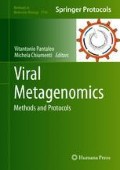Abstract
In nature, mycorrhizal association with soilborne fungi is indispensable for orchid families. Fungal structures from compatible endo-mycorrhizal fungi in orchid cells are digested in cells to be supplied to orchids as nutrition. Because orchid seeds lack the reserves for germination, they keep receiving nutrition through mycorrhizal formation from seed germination until shoots develop (leaves) and become photoautotrophic. Seeds of all orchid species surely geminate with the help of their own fungal partners, and this specific partnership has been acquired for a long evolutional history between orchids and fungi.
We have studied the interactions between orchids and mycorrhizal fungi and recently conducted transcriptome analyses (RNAseq) by a next-generation sequencing (NGS) approach. It is possible that orchid RNA isolated form naturally grown plants is contaminated with RNAs derived from mycorrhizal fungi in the orchid cells. To avoid such contamination, we here prepared aseptically germinated orchid plants (i.e., fungus-free plants) together with a pure-cultured fungal isolate and field-growing orchid samples. In the cDNA library prepared from orchid and fungal tissues, we found that partitivirus-like sequences were common in an orchid and its mycorrhizal fungus. These partitivirus-like sequences were closely related by a phylogenetic analysis, suggesting that transmission of an ancestor virus between the two organisms occurred through the specific relation of the orchid and its associated fungus.
Access this chapter
Tax calculation will be finalised at checkout
Purchases are for personal use only
References
Ghabrial SA, Suzuki N (2009) Viruses of plant pathogenic fungi. Annu Rev Phytopathol 47:353–384
Yu X, Li B, Fu Y, Jiang D, Ghabrial SA, Li G, Peng Y, Xie J, Cheng J, Huang J, Yi X (2010) A geminivirus-related DNA mycovirus that confers hypovirulence to a plant pathogenic fungus. Proc Natl Acad Sci U S A 107:8387–8392
Nuss DL (2005) Hypovirulence: mycoviruses at the fungal-plant interface. Nat Rev Microbiol 8:632–642
Anagnostakis SL (1982) Biological control of chestnut blight. Science 215:466–471
Wei CZ, Osaki H, Iwanami T, Matsumoto N, Ohtsu Y (2004) Complete nucleotide sequences of genome segments 1 and 3 of Rosellinia antirot virus in the family Reoviridae. Arch Virol 149:773–777
Chiba S, Salaipeth L, Lin YH, Sasaki A, Kanematsu S, Suzuki N (2009) A novel bipartite double-stranded RNA Mycovirus from the white root rot Fungus Rosellinia necatrix: molecular and biological characterization, taxonomic considerations, and potential for biological control. J Virol 83:12801–12812
Smith SE, Read DJ (2008) Mycorrhizal symbiosis, 3rd edn. Academic Press, London, p 800
Ikeda Y, Shimura H, Kitahara R, Masuta C, Ezawa T (2012) A novel virus-like double-stranded RNA in an obligate biotroph arbuscular mycorrhizal fungus: a hidden player in mycorrhizal symbiosis. Mol Plant-Microbe Interact 25:1005–1012
Nibert ML, Ghabrial SA, Maiss E, Lesker T, Vainio EJ, Jiang D, Suzuki N (2014) Taxonomic reorganization of family Partitiviridae and other recent progress in partitivirus research. Virus Res 188:128–141
Szego A, Enünlü N, Deshmukh SD, Veliceasa D, Hunyadi-Gulyás E, Kühne T, Ilyés P, Potyondi L, Medzihradszky K, Lukács N (2010) The genome of Beet cryptic virus 1 shows high homology to certain cryptoviruses present in phylogenetically distant hosts. Virus Genes 40:267–276
Tsutsui K, Tomita M (1990) Suitability of several carbohydrates as the carbon sources for symbiotic seedling growth of two orchid species. Lindleyana 5:134–139
Shimura H, Koda Y (2005) Enhanced symbiotic seed germination of Cypripedium macranthos var. rebunense following inoculation after cold treatment. Physiol Plant 123:281–287
Shimura H, Sadamoto M, Matsuura M, Kawahara T, Naito S, Koda Y (2009) Characterization of mycorrhizal fungi isolated from the threatened Cypripedium macranthos in a northern island of Japan: two phylogenetically distinct fungi associated with the orchid. Mycorrhiza 19:525–534
Shimura H, Koda Y (2004) Micropropagation of Cypripedium macranthos var. rebunense through protocorm-like bodies derived from mature seeds. Plant Cell Tissue Organ Cult 78:273–276
Grabherr MG, Haas BJ, Yassour M, Levin JZ, Thompson DA, Amit I, Adiconis X, Fan L, Raychowdhury R, Zeng Q, Chen Z, Mauceli E, Hacohen N, Gnirke A, Rhind N, di Palma F, Birren BW, Nusbaum C, Lindblad-Toh K, Friedman N, Regev A (2011) Full-length transcriptome assembly from RNA-Seq data without a reference genome. Nat Biotechnol 29:644–652
Thompson JD, Higgins DG, Gibson TJ (1994) CLUSTAL W: improving the sensitivity of progressive multiple sequence alignment through sequence weighting, position-specific gap penalties and weight matrix choice. Nucleic Acids Res 22:4673–4680
Saitou N, Nei M (1987) The neighbor-joining method: a new method for reconstructing phylogenetic trees. Mol Biol Evol 4:406–425
Tamura K, Peterson D, Peterson N, Stecher G, Nei M, Kumar S (2011) MEGA5: molecular evolutionary genetics analysis using maximum likelihood, evolutionary distance, and maximum parsimony methods. Mol Biol Evol 28:2731–2739
Acknowledgments
We thank Dr. Tatsuhiro Ezawa (Hokkaido University, Japan) for his helpful advice for the experiments. We also thank Ms. Chieko Hirata for her technical help. We appreciate Botanical Garden, Hokkaido University, for giving us orchid materials. This work was supported in part by grants from the Ministry of the Environment, Government of Japan (Global Environment Research Fund).
Author information
Authors and Affiliations
Corresponding author
Editor information
Editors and Affiliations
Rights and permissions
Copyright information
© 2018 Springer Science+Business Media, LLC
About this protocol
Cite this protocol
Shimura, H., Masuta, C., Koda, Y. (2018). Metagenomic Analyses of the Viruses Detected in Mycorrhizal Fungi and Their Host Orchid. In: Pantaleo, V., Chiumenti, M. (eds) Viral Metagenomics. Methods in Molecular Biology, vol 1746. Humana Press, New York, NY. https://doi.org/10.1007/978-1-4939-7683-6_12
Download citation
DOI: https://doi.org/10.1007/978-1-4939-7683-6_12
Published:
Publisher Name: Humana Press, New York, NY
Print ISBN: 978-1-4939-7682-9
Online ISBN: 978-1-4939-7683-6
eBook Packages: Springer Protocols

